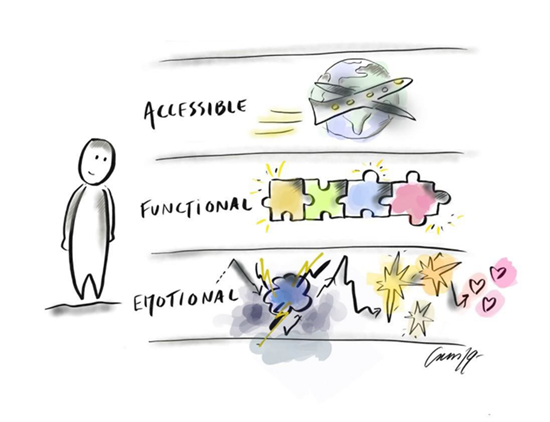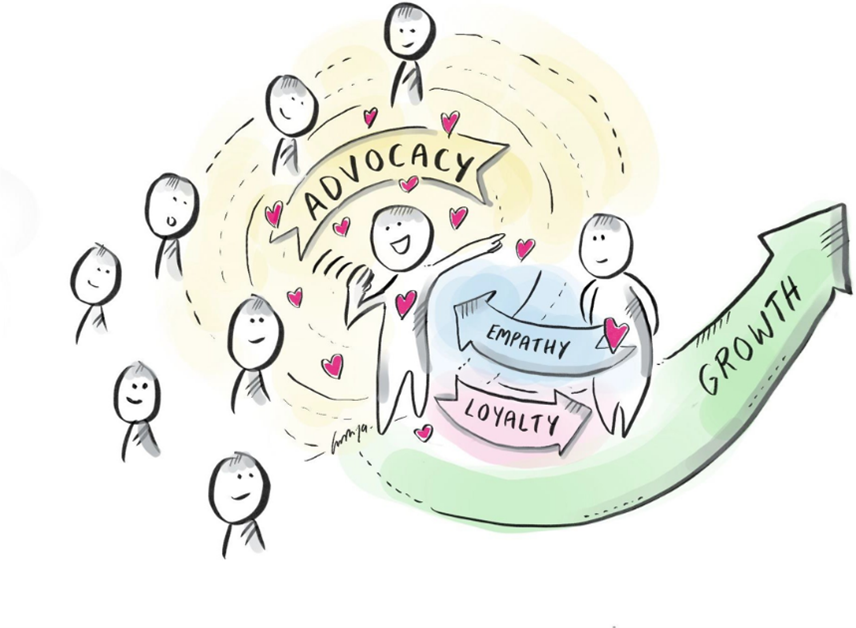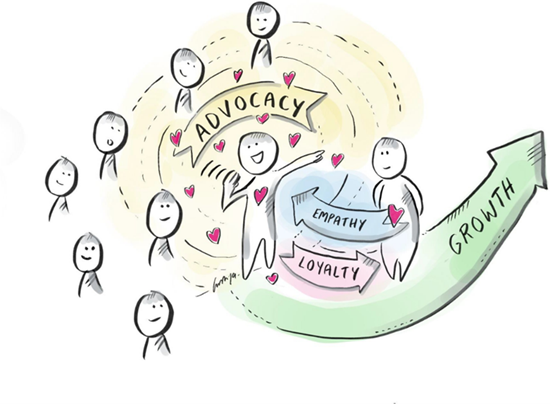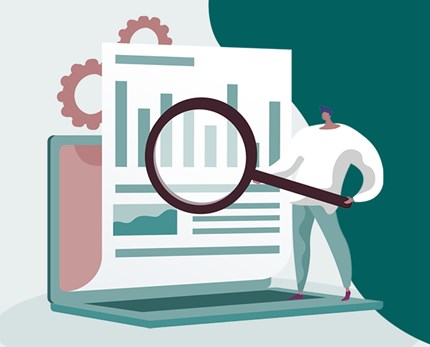What's next for customer experience in 2022?

- 13 December 2021
The last 18 months have been a transformative time for customer experience. So, what does a compelling customer experience look like in the new digital world? And what emerging trends can we expect to see over the next 12 months? Read on to find out.
No one needs to be told that the world is in crisis. Our health, our economies, our planet – in fact, the whole human race – is still wrapped up in the catastrophe of the last year. For some businesses the effect has been catastrophic, particularly those without succinct online operations. Others, however, have been able to capitalise on the opportunity to build online communities based on digital interactions. As the business landscape continues to be rocked by the lasting effects of the pandemic, creating and maintaining strong relationships with customers should be a key priority for the time ahead – and understanding the complex mixture of emotions your customers are likely to be feeling is an essential place to start.
The effect of panic
When things go wrong unexpectedly, it is completely natural for your body to panic. We all go through different emotional states – from panic, denial, frustration, and anger, to apathy and confusion. There are several interpretations of the ‘change curve’, a model originally developed in the 1960s by Elisabeth Kubler-Ross to explain the grieving process. It is a model that has been widely utilised as a method of helping people understand their reactions to significant change or upheaval – it is an immensely powerful model to explain what is happening now.
If the last two years have taught us anything, it is that the way businesses adapt and respond will define them now and in the future.
Understanding how humans transition through these different emotional states is extremely important for businesses trying to deal with the current situation. Customers and employees are all humans, and the more adept businesses are at understanding the emotions of customers and employees, the better they will be at not reacting to the current crisis, but at adapting and responding to the current crisis. If the last two years have taught us anything, it is that the way businesses adapt and respond will define them now and in the future.
The fundamentals of customer experience
I often describe the customer experience as containing three component parts – the functional, accessible and emotional:
- The functional component represents an organisations products and services.
- The accessible component represents how easy it is for customers to interact with those products and services.
- However, it is the third component that is the most important of the three. The third component is the emotional one – representing the way the experience makes a customer feel. The way an experience makes a customer feel is what they are most likely to remember.

Customers will remember one of three outcomes from the experiences they have – the very good; the very bad; or nothing at all. As businesses adapt and respond, it is the ones who can leave customers remembering their experiences for the right reasons that are the ones who are ultimately far more likely to prevail.
The importance of collaboration
It is more important than ever for businesses – shareholders and employees alike – to work together. Work together to listen, learn, understand, and respond to the needs of human beings in a way that leaves customers remembering the experiences they have for the right reasons.
I have always believed that the most important underlying principle of customer experience is the principle of empathy. The ability to understand and share the feelings of another is a core driver of sustainable business growth. Empathy builds advocacy with a customer, it turns them into ‘fans’, fans become loyal, unlocking more revenue opportunities.


Five things businesses should focus on to manage customer experience
So, with the principle of empathy in mind, I want to conclude this article with five things businesses should focus on when managing the customer experience as we emerge from the Covid-19 crisis:
- Have a simple, clear message:
What are you doing as a business and what do you want the experience for your customers and employees to be? Are you clearly communicating the message in a way that fits into the changing lives of your stakeholders? - Focus on your employees first:
If you want your people to deliver an experience that leaves customers remembering you for the right reasons, then you must consider how you are enabling your employees to do that. You cannot expect your people to treat your customers in a way that you are not treating them. - Give your people time to think:
To show empathy, your employees will need to be able to think and act in the interests of the customer. This may mean giving them a greater ability to do ‘what is right’ for the customer, rather than sticking to rules and regulations devised without the crisis in mind. If they just ‘do what they are told’, they will be less likely to empathise with customers. This will not only negatively affect the customer experience, but also the employee experience. - Listen more and talk less:
This is not a time to dictate, this is a time to listen. Customers and employees need reassurance, and they need to feel secure, and that they can trust the businesses they are dealing with. Listening to their needs, wants and concerns and acting accordingly will have a significant effect on the emotional outcomes of their experiences. - Close the loop:
If we are listening, then we should also be ‘acting’ on what we are listening to. Far too many organisations fail to act on the feedback they capture from customers. This is an opportunity to ensure that we demonstrate empathy, authenticity and sincerity and tell our customers what we have done with the feedback they have given.
What’s next?
Over the next year or so, I suspect we will begin to see more in-person customers, who want a personalised and unique experience. For businesses, it’s time to draw people away from staying online. If you adapt the customer experience, your customers will move with you.
Whist the world will be a vastly different place in 2120, it is also a very different place to the one it was in 1920. Change is inevitable. A very rocky road of change is also inevitable – that we can do nothing about. It is how we adapt and respond to change that will determine if we are still around to tell the tale.
Learn more about the relationship between marketing and customer experience in our two-day virtual Customer Experience Management training course. You’ll discover the latest trends impacting the customer lifecycle and how your business can stay ahead of the curve. Sign up now.

- 0 views

 FAQs
FAQs
 Log in
Log in
 MyCIM
MyCIM






